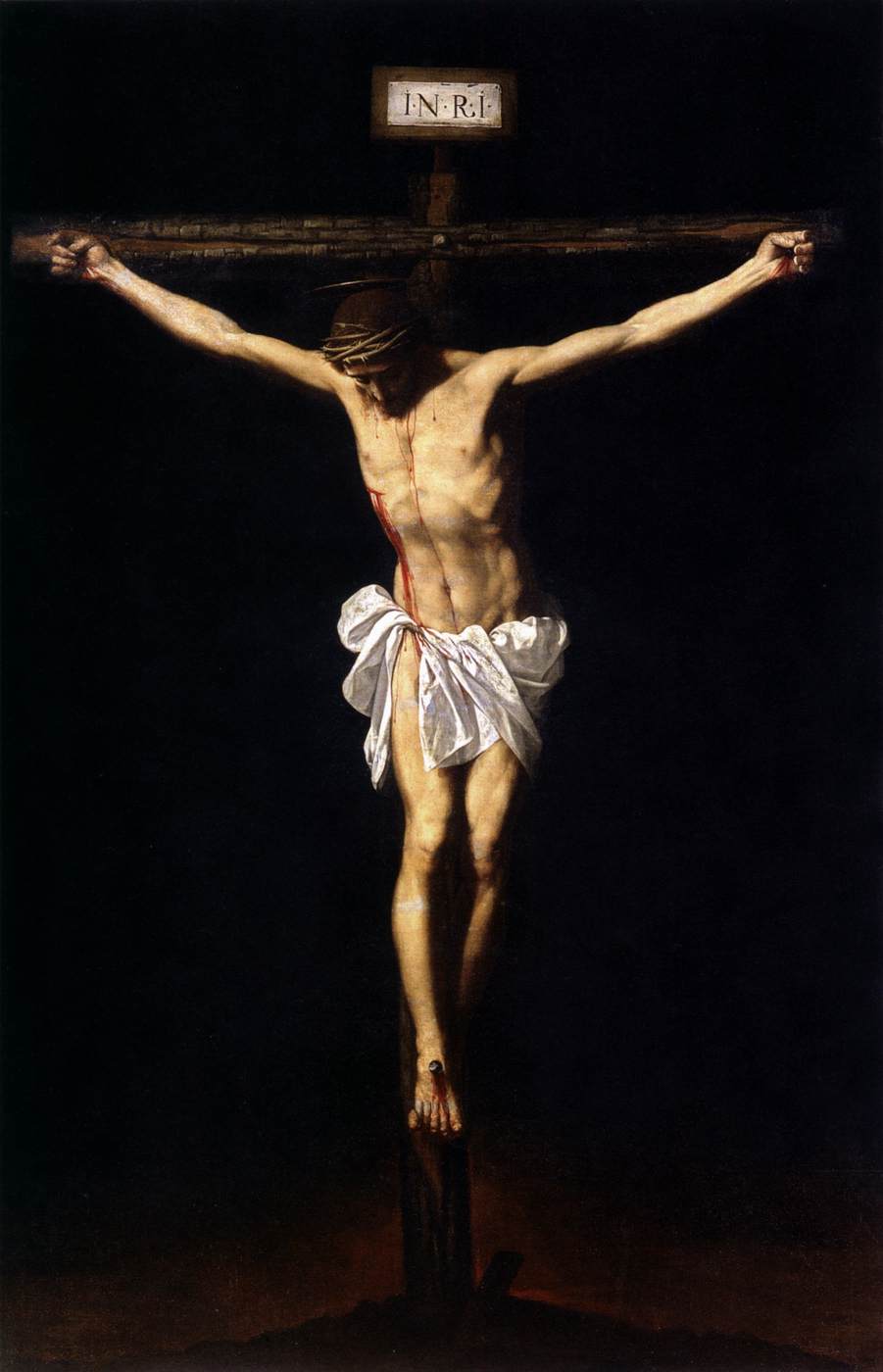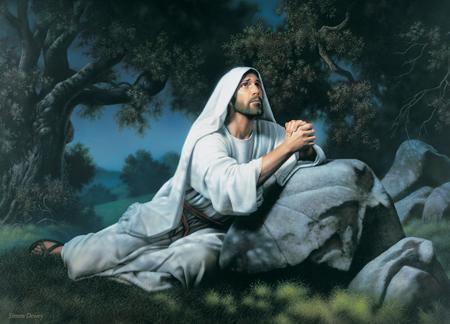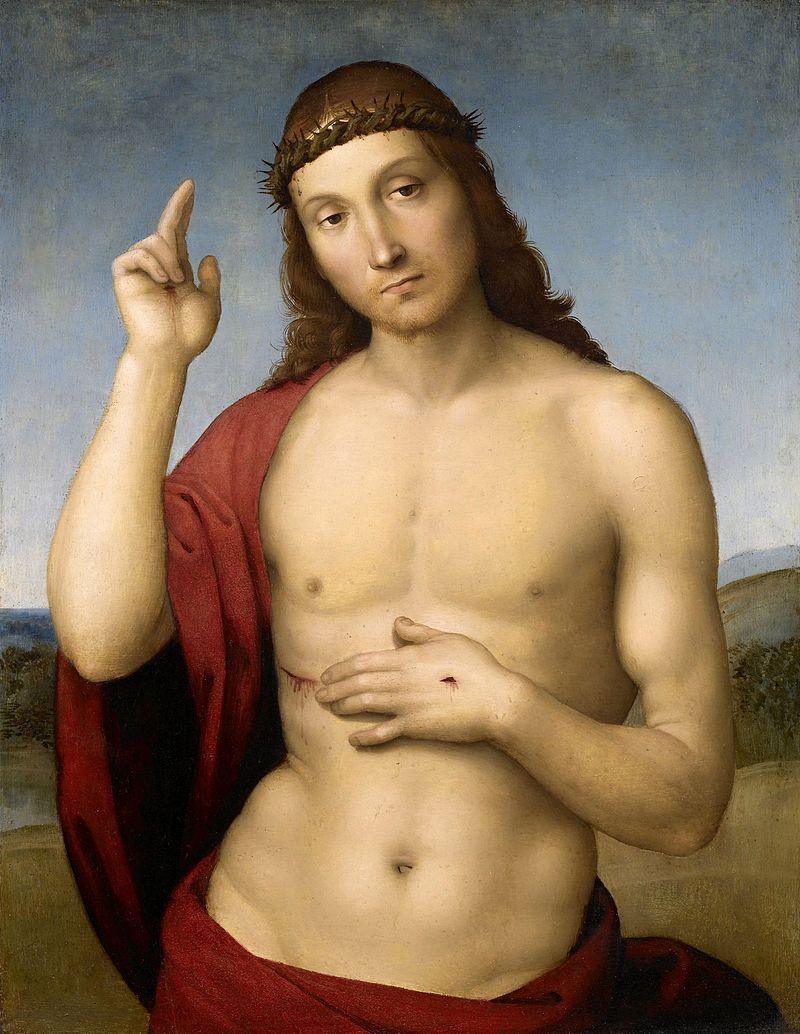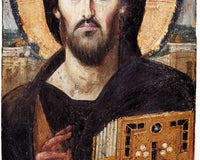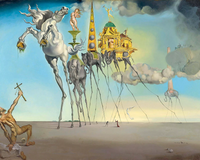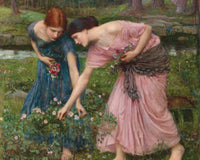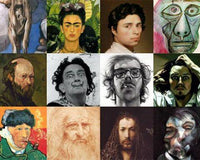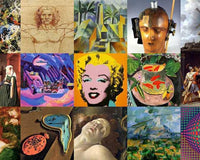There is no doubt that many people agree that most of the famous works of art found in museums and private collections around the world are priceless.
Being unique, it is difficult to assign a value to many famous paintings; however, almost daily, art is bought and sold, often at exorbitant prices that most will never be able to afford. But there are some eccentric buyers who can indulge in that pleasure.
Kuadros offers a compilation of the 5 most expensive famous paintings in history.
No.1 Salvator Mundi (Christ the Savior of the World) - Leonardo da Vinci (US$ 450.3 Million)

In May 2008, some of the top experts on the famous painter gathered around an easel in a studio high above Trafalgar Square. The object they had been invited to examine, in the conservation department of the National Gallery, was a painting on a walnut panel. It depicted a bearded man with long hair looking forward with one hand raised in blessing and the other holding a transparent sphere.
Leonardo painted Salvator Mundi possibly for King Louis XII of France and his consort, Anne of Brittany. The unsettling oil painting on a 66-centimeter panel represents a half-body figure of Christ as the Savior of the World, viewed frontally and dressed in gowns of the Renaissance period. In this famous painting, Leonardo represents Christ as characterized in the Gospel of John 4:14: "We have seen and testify that the Father has sent His Son as the Savior of the world." Christ stares at the viewer, slightly bearded with chestnut curls, holding a crystal sphere in his left hand and offering a blessing with his right.
The painting was lost from 1763 to 1900 when it was purchased by Sir Charles Robinson as a work by Bernardino Luini, a follower of Leonardo. It then appeared at Sotheby's in England in 1958. It disappeared again until it was sold at a small auction house in the United States in 2005.
Like many of the surviving works of Leonardo, this famous painting was not in perfect condition when it resurfaced in the early 2000s. Extensive restoration was required. Although some respected experts in Renaissance art question the attribution of the painting to Leonardo, it was ultimately sold at auction at Christie's in New York in November 2017 for $450 million, a new record price for a famous work of art. The buyer was not revealed.
Today it is considered a forgery.
Buy a reproduction of Salvator Mundi (Christ as the Savior of the World) at the Kuadros online store
No.2 Exchange - Willem de Kooning (US $ 300 million)
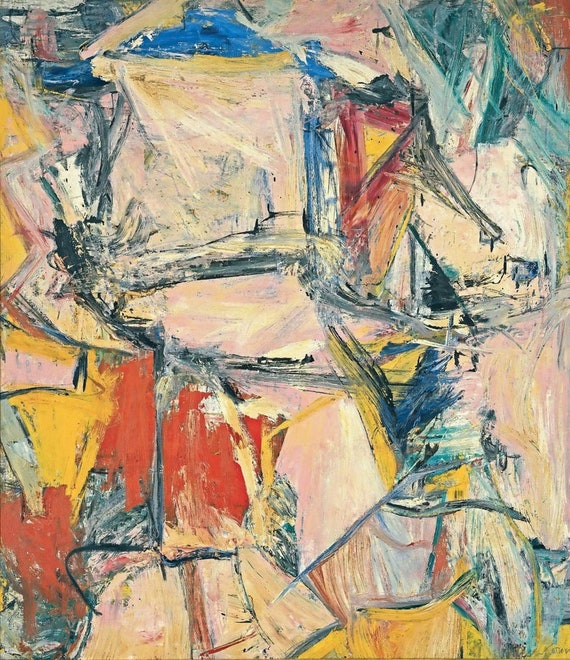
The idea of addressing the primitive was initiated by Gauguin, but it could be partly discerned in De Kooning's work.
While we love to explore the less tangible qualities of abstract art, we are also very aware that it can be a wonderful financial investment. To date, the most expensive painting ever sold in abstract art is a landscape by Willem de Kooning called Exchange, which sold for 300 million dollars in 2015. The famous painting reached that record price in a private sale to Chicago hedge fund manager Kenneth Griffin, as part of a $500 million package that also included Jackson Pollock's Number 17A painting.
The Jackson Pollock painting that Kenneth Griffin purchased along with Exchange appeared in the 1949 publication of Life Magazine that made Jackson Pollock and Abstract Expressionism known. Few paintings capture a moment in time more succinctly. That magazine article was one of the main reasons why De Kooning and other abstract expressionists were finally able to make a living from their art. Together, these two famous paintings represent the moment when the United States gave rise to its first native modern art movement. Exchange is valuable not only as an object. Its value lies in its myth.
Stylistically, Exchange marks one of the most transformative periods in the career of one of the most important abstract artists of the 20th century. In addition to being an influential painter, Willem de Kooning was a vital connecting force among his contemporaries. He was a friend and mentor to Arshile Gorky, Jackson Pollock, Franz Kline, and dozens of other abstract expressionists.
During the period when these artists struggled, De Kooning remained a passionate supporter of their work. Exchange was painted just as De Kooning's and his contemporaries' fortunes were experiencing a massive change. They were becoming financially stable, many for the first time, which meant they had the opportunity to make new decisions, both professionally and personally. For De Kooning, this manifested in a gradual domestication of his notoriously wild lifestyle, culminating in a move to a farm in East Hampton.
Creatively, De Kooning manifested in an 11-year period dedicated to painting abstract landscapes, of which Exchange was one of the earliest works.
No.3 The Card Players - Paul Cezanne (estimated between US $ 250 and $ 300 million)

The Card Players is a series of Impressionist paintings by the French modernist Paul Cezanne. One of his most ambitious projects, now seen as an important contribution to modern art. Although painted during Cezanne's final period, they represent some of the best genre paintings of the French School. There are five versions in the series, each varying in content and size: one is in a private collection, while the others are in the Musée d'Orsay, the Courtauld Gallery, the Barnes Foundation, and the Metropolitan Museum of Art. The private version was purchased in 2011 by the Qatar Royal Family for an estimated sum between $250 million and $300 million. Cezanne is famous for his still-life painting, and art historians believe he chose the theme of cards because the people playing the game were essentially a form of human still life.
He was probably also influenced by the Nain brothers (1599-1677) whose Card Players (c.1642) were in the collection of his local art museum in Aix-en-Provence.
The two men study their cards carefully, but no move seems imminent. The details of the game have receded further and life has calmed down. Cézanne's card players, like many of his figures, occupy a space somewhere between figure painting and object painting. They shift between different genres.
In the 1890s, Cézanne was independently wealthy; he could comfortably pay his models to pose, and the resulting works were made of industrially produced pigments, usually applied to commercially manufactured standard size canvases. Almost simultaneously with finishing the series, the artist entered into a relationship with a Parisian art dealer, Ambroise Vollard, who later became the first owner of the famous canvas. Vollard's business accounting books record that he made a good profit from the work, buying it for 250 francs and selling it for 4,500 by the early 1900s. However, the enduring appeal of Cézanne's The Card Players may lie in the way the five paintings provide a distinctive contrast to the modern capitalism that surrounded their creation. If life may seem increasingly fast, superficial, and mercenary, then perhaps some solace can be found here, in our prolonged commitment to handmade canvases that showcase a timeless, rooted, and sociable pastime.
Buy a reproduction of The Card Players at the Kuadros online store
No.4 Nafea Faa Ipoipo? (When Will You Marry?) - Paul Gaugain (US $ 300 million)

A younger woman in traditional clothing stretches forward on the ground. She is looking back, and partially obscured is a more matronly figure in Western-style dress raising her hand in a gesture of importance. The flower behind the girl’s ear is a traditional Tahitian symbol by which marriageable women indicate their availability for marriage. At the bottom of the image, there is an inscription in the language: "NAFEA Faa ipoipo," which translates to: "When will you marry?"
In 1891, the founding father of primitivism, Eugene Henri Paul Gauguin traveled to Tahiti in search of an Edenic paradise where he could create pure and primitive art.
By escaping European society, technology, and cultural traditions, Gauguin hoped to capture intact primitive spiritual societies from the modern world. But the Polynesian reality did not meet Gauguin's expectations of primitive rural life. Tahiti had already been colonized in the 18th century, so when the artist arrived there, he could not find the culture he was longing for. Unfortunately, two-thirds of the native population were killed by European diseases, and the indigenous religion was destroyed by Catholic and Mormon missionaries.
Gauguin successfully settled into local life and had taken a young girl named Teha’amana as his native wife. Their marriage was arranged by the girl's family, who considered it a great privilege for their daughter to marry a white man, while for Gauguin it was an informal union by any European standard. And although his Tahitian life was not as primitive as Gauguin had anticipated, he chose to live there. During that period, he produced several of his most well-known "Gauguin paintings" of Tahitian women, and Teha’amana was likely the model for many of these images.
Nafea Faa Ipoipo (When Will You Marry?), has recently been discussed as one of the most expensive famous works in history, selling for almost $300 million in 2015, with the Qatar Museum being the buyer. Gauguin (1848-1903) was not a particularly popular artist while he was alive, and it was only after his death at the age of fifty-four that his talent was fully recognized. His artwork is distinguished by its bold experimentation with color and synthesizer style.
The famous painter Gauguin is considered to have had a significant influence on the French avant-garde, as well as on 20th-century artists like Pablo Picasso, Joan Miró, and Henri Matisse.
Buy a reproduction of Nafea Faa Ipoipo? (When Will You Marry?) at the Kuadros online store
No.5 Number 17A - Jackson Pollock (US $ 200 million)

This abstract artwork was created in 1948 by the famous American abstract expressionist painter Jason Pollock. It was made with oil paint on a wood fiber canvas. It is an example of Pollock's drip painting series, and one of the earlier pieces of this series. Number 17A lacks any kind of creative title and is one of the best examples of the radically exceptional and unique form of drip painting that Pollock introduced to the world in 1947. Although such paintings may seem to occur randomly and spontaneously, one can truly trace the precise movement and control that Pollock had when creating this piece. Initially, these drip paintings by Pollock were met with great public scrutiny and were mostly unpopular, and thus had little value in art markets.
This extreme form of abstraction divided critics: some praised the immediacy of the creation, while others mocked the random effects.
Do you remember the astonishing $500 million that Ken Griffin spent on two paintings from David Geffen's collection? Well, the second painting, purchased for $200 million, equally impressive, was Number 17A.
This makes Number 17A the fifth most expensive famous painting ever sold in history. Before this sale, the famous painting had been exhibited at the Art Institute of Chicago.
KUADROS ©, a famous painting on your wall.


